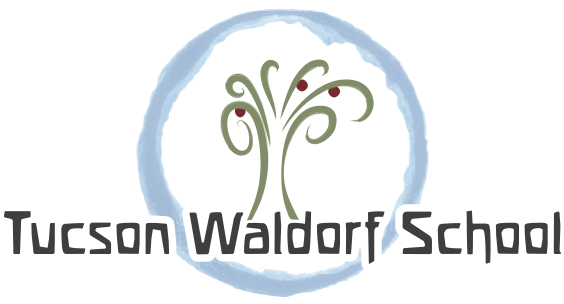Third grade is often a year of dramatic transformation for the student’s individual identity. Children begin to look more critically and consciously at the world around them as their feeling of individual identity grows and they begin to realize that they are separate from their environment. Waldorf educators recognize this important transition in childhood, the nine-year-old change, and the teacher presents a curriculum designed to support the students as they ask, “Who am I in relation to others and the world?”
This transitional process is supported in the curriculum by connecting students with task-oriented experiences in life, often referred to as “practical work.” Students study measurement, farming, gardening, and house building, and they engage in practical work that helps them develop a sense of place and worth on earth. They take on personal responsibility in projects to experience both how they affect the world and the outcomes of their efforts. Working in collaboration with small and large groups, they gain ownership of projects and participate in communal initiatives to achieve practical goals.
Main Learning Objectives
Language Arts
The Biblical Old Testament provides the material for the continuing study of language arts in the third grade. The stories of Hebrew culture reflect the third-grade student’s growing self-awareness, and a feeling for the Hebrew language expands the understanding of the world’s people, an understanding that is growing in the soul of the child. Spelling skills, word families (nouns, verbs, and adjectives) and a growing independence in reading, cursive writing, and language comprehension are a focus of this year’s study. The class presents a dramatic production of an Old Testament story.
Mathematics
The work with the arithmetic operations continues, with students engaging in increasingly complex problems requiring thinking with addition, subtraction, multiplication, and division. Their study of measurement brings arithmetic to practical work, and they continue to practice on their way to mastery of the multiplication tables.
Science
Systems of measurement for distance, volume, weight and time are explored through human history. Based on a study of human habitation, each child creates a model of a human shelter to scale.
Students begin regular gardening lessons with a specialty teacher in the garden. The farm chicken flock offers the opportunity for study and understanding the role of animals on a farm, and a neighbor’s goats kept on campus expand that opportunity. Cooking and the elements of earth, water, fire, and air are explored, and students have a chance to explore the quality of food that supports us on earth.
Art
As in first and second grade, art permeates all lessons of the year. Children continue to develop their skills with pencil, crayon, and paint. Modeling continues, and teachers often expand the materials list to provide the opportunity for the building of models of human houses from around the world.
Form drawing grows in complexity and includes forms with above and below symmetry that demand an objective control that students begin to manage at this age.
Specialty Subjects
Foreign Language
Students continue with story and verse to build vocabulary and power of expression in Spanish.
Practical Arts
Work with fiber arts, knitting, sewing, and crochet, continues in this year. Students crochet hats, complete the knitted vest begun in grade two and sometimes continue with a second article of clothing.
Music
Students continue to sing together with their class teacher, and they begin playing the straight-barreled C-flute.
Movement Education
Cooperative games and individual skill and fitness continue as the focus of the third-grade movement work.
